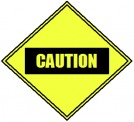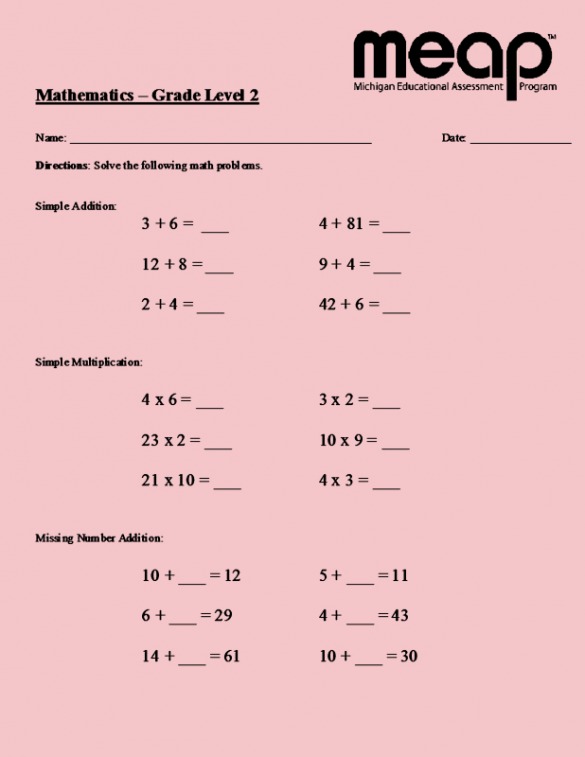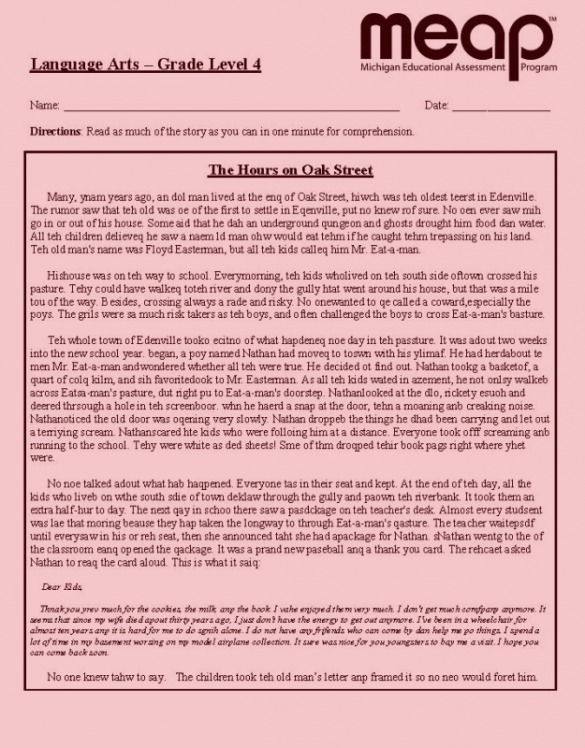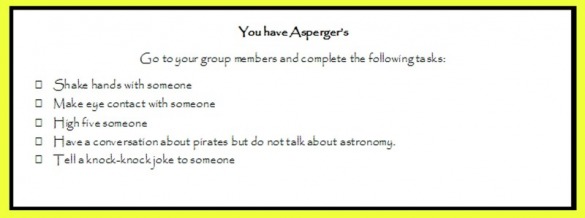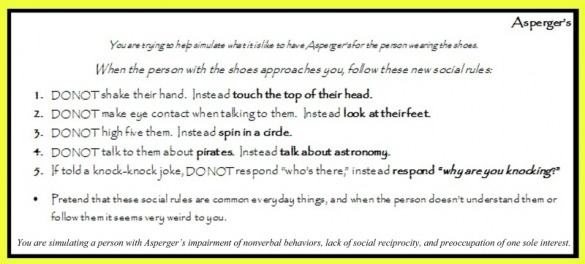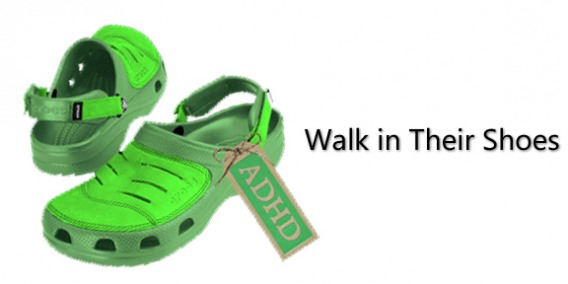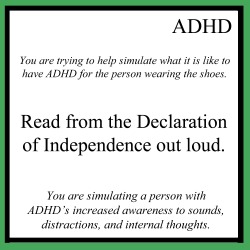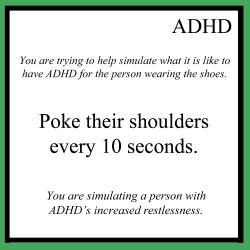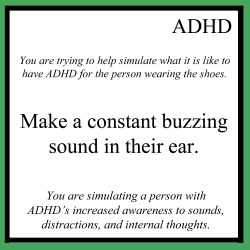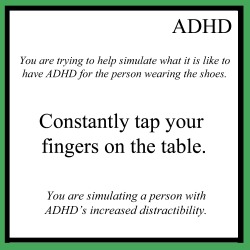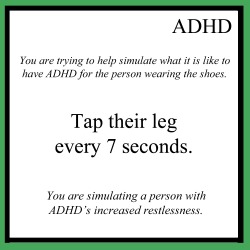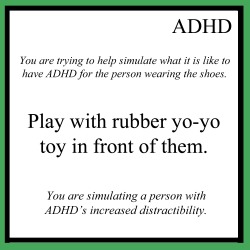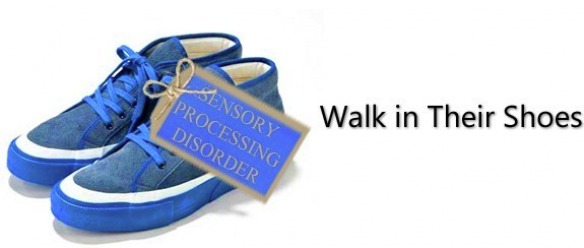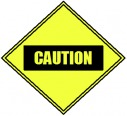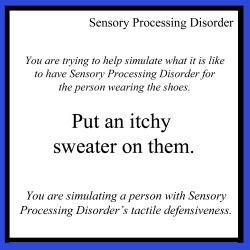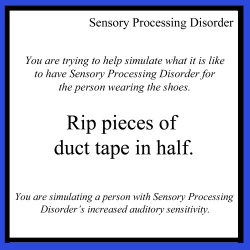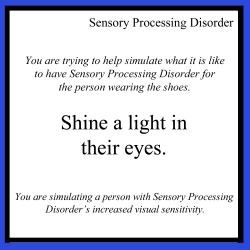Vocabulary Related to Students with Special Needs
- DSM-IV - Diagnostic and Statistical Manual of Mental Disorders
- Published by the American Psychiatric Association
- Provides a common language and standard criteria for the classification of mental disorders.
- 5 tiered diagnostic levels (A social worker or psychologist does all of them for every patient)
- Axis 1. A mental illness of some kind
- Axis 2. A personality disorder and/or mental retardation
- Axis 3. A physical health disorder
- Axis 4. Social situation affected (divorced, father died, mother died, conflicts in home, loss of job)
- Axis 5. Global Assessment of Functioning. A number given to a person to indicate their overall level of functioning.
- IEP – Individualized Education Plan
- IEPC – Individualized Education Plan Committee
- When teacher, administrator, special education teacher, therapist, parent, anyone else the parent wants to include, and the student is also often included meet.
- Decide on many different things related to the students education
- What placement?
- What kind of classroom?
- How much time in the regular ed classroom?
- How much in the special ed classroom?
- What services they get and how much time at them?
- Who is going to do what?
- The student also gets goals in measurable terms,
- Example: A student with trouble and hand eye coordination so the goal would be that the student will put spaces between his words 80% of the time.
- IBP – Individualized Behavior Plan
- An individualized plan filled out for each special behavior medication accommodation
- Might be a part of the IEP if student has a particular type of behavior, like violence.
- Student might need to be placed in a classroom alone and that needs an IBP.
- If student needs to be restrained, then an IBP needs to be filled out.
- Parent has to sign it, but they can sign it in disagreement and if parent doesn’t approve it can’t be done.
- PT – Physical Therapist
- Works on gross motor skills
- walking
- lifting
- standing
- crawling
- jumping
- running
- OT – Occupational Therapist
- Works on fine motor skills
- writing
- drawing
- typing
- cutting
- building with blocks
- LD – Learning Disabled
- Can have normal intelligence
- Often they simply just “learn differently”
- EI – Emotionally Impaired
- Mental health issues that affect their ability to learn in the classroom.
- Social worker usually gives out this label.
- MI – Mentally Impaired
- Cognitive functioning impedes normal functioning
- SXI – Severely Multiply Impaired
- Student has more than one disability which is at a significant level.
- Lower ratio in the classroom
- Usually might have a one on one parapro
- AI – Autistic Impaired or AS - Autisitic Spectrum
- Social worker has to diagnose that.
It is important to note that a label does not dictate classroom locations but the services that child receives
- Dyslexia literally means the inability to master language. In practice, however, the term refers to people who have extreme difficulty acquiring the ability to read and spell. Specifically, people with dyslexia have trouble learning the code for written language. Difficulty in sounding out words and spelling words persists, despite effort on the part of teachers and the learner. The person with dyslexia demonstrates a number of characteristics associated with difficulty learning to read and write.
"What Is Dyslexia?" Center for Dyslexia. Dec. 2004. Web. 10 Apr. 2010.
<http://dyslexia.mtsu.edu/about/whatisdyslexia.html>.
<http://dyslexia.mtsu.edu/about/whatisdyslexia.html>.
Characteristics of Dyslexia Include:
- Difficulty learning and remembering printed words
Classroom Example: Student often has difficulty with many easy site words.
- Letter Reversal
Classroom Example: Student often writes bed as “deb” and quit ad “puit.”
- Number Reversal
Classroom Example: Student often writes 3 + 3 as 9 on his/her math homework.
- Changed order of letters in words or numbers
Classroom Example: Student often writes “the gip on the farm was big.”
- Leaving out or inserting words while reading
Classroom Example: Student often skips over words when he/she reads out loud.
- Confusing vowel sounds or substituting one consonant for another
Classroom Example: Student often has difficulty with pronouncing his/her vowels phonetically.
- Difficulty Writing
Classroom Example: Student often is excited to tell a story but gets frustrated during writing
workshop when he/she has to write it down.
- Persistent spelling errors
Classroom Example: Student often does poorly on his/her spelling tests.
"What Is Dyslexia?" Center for Dyslexia. Dec. 2004. Web. 10 Apr. 2010.
<http://dyslexia.mtsu.edu/about/whatisdyslexia.html>.
<http://dyslexia.mtsu.edu/about/whatisdyslexia.html>.
- This is not an all inclusive list. There are multiple other diagnostic criteria that may be present in a particular student with the disability.
- Just because a student demonstrates one or more of these behaviors does not necessarily mean they have this disability.
- It does mean teachers should talk to their parents about possibly having him or her tested by a professional.
- Teachers should be cautious of labeling .
- They should not be afraid to ask for help and consult with their fellow teachers, administrators, ancillary staff, etc.
This is an activity that can be done to help better understand what it feels like to have this disability.
It will help a person to “walk in the shoes” of someone with this disability.
The person wearing the shoes should complete the two red worksheets. Notice how they compare to the answer key and the other worksheet. It becomes much more difficult to get the right answers or understand the text.
It will help a person to “walk in the shoes” of someone with this disability.
The person wearing the shoes should complete the two red worksheets. Notice how they compare to the answer key and the other worksheet. It becomes much more difficult to get the right answers or understand the text.
- To be effective this activity requires a maturity and a sense of empathy and understanding for those that truly do deal with these disabilities day in and day out.
- There is no way to completely understand what these students experience by having these conditions, but it is hoped that this might provide a window into their lives or a small degree of enlightenment.
Ways to Help Accommodate This Student in the Classroom:
- Allow textbook checkout
- Use colorful paper
- Offer audio textbooks
- Allow for varied responses rather than just essay questions
- Phonetic awareness
- Allow more time for tests
- Have other students read to the dyslexic students
- Have dyslexic students read out loud
- In people with Asperger's Syndrome, deficits in social interaction and unusual responses to the environment, similar to those in autism, are observed. Unlike in autism, however, cognitive and communicative development are within the normal or near-normal range in the first years of life, and verbal skills are usually an area of relative strength. Idiosyncratic interests are common and may take the form of an unusual and/or highly circumscribed interest (e.g., in train schedules, snakes, the weather, deep-fry cookers, or telegraph pole insulators).
"Asperger's Syndrome: Yale Child Study Center." Yale Child Study Center:
Yale School of Medicine. Dec. 2009. Web. 10 Apr. 2010.
<http://childstudycenter.yale.edu/autism/aspergers.html>.
Yale School of Medicine. Dec. 2009. Web. 10 Apr. 2010.
<http://childstudycenter.yale.edu/autism/aspergers.html>.
Characteristics of Asperger's Include:
- Marked impairment in the use of multiple nonverbal behaviors such as eye to eye gaze, facial expression, body postures, and gestures to regulate social interaction
Classroom Example: Student often looks at his/her classmates shoes when he/she talks to them.
- Failure to develop peer relationships appropriate to developmental level
Classroom Example: Student often plays alone at class time recess but plays with the first graders
during lunch time recess.
- A lack of social or emotional reciprocity
Classroom Example: Student often gets confused and frustrated when his/her classmates try to
high-five him/her asking “Why would I do that?”
- Encompassing preoccupation with one or more stereotyped and restricted patterns of interest that is abnormal either in intensity or focus
Classroom Example: Student often reads books on space, wants to do projects on space, and will talk
to his/her classmates about space.
- Apparently inflexible adherence to specific, nonfunctional routines or rituals
Classroom Example: Student often gets emotional and frustrated when the class has to do math
before writing which is usually first on the schedule.
- Stereotyped and repetitive motor mannerisms
Classroom Example: Student often flaps his/her fingers and twists his/her hand when he/she works
on math worksheets.
"Asperger's." Diagnostic and Statistical Manual of Mental Disorders:
DSM-IV. Washington, DC: American Psychiatric Association, 1994. Print.
DSM-IV. Washington, DC: American Psychiatric Association, 1994. Print.
- This is not an all inclusive list. There are multiple other diagnostic criteria that may be present in a particular student with the disability.
- Just because a student demonstrates one or more of these behaviors does not necessarily mean they have this disability.
- It does mean teachers should talk to their parents about possibly having him or her tested by a professional.
- Teachers should be cautious of labeling .
- They should not be afraid to ask for help and consult with their fellow teachers, administrators, ancillary staff, etc.
This is an activity that can be done to help better understand what it feels like to have this disability.
It will help a person to “walk in the shoes” of someone with this disability.
The person wearing the shoes should take the first card and read it away from the rest of the group.
The others in the group should read from the second card and help simulate Asperger's for the other person.
It will help a person to “walk in the shoes” of someone with this disability.
The person wearing the shoes should take the first card and read it away from the rest of the group.
The others in the group should read from the second card and help simulate Asperger's for the other person.
- To be effective this activity requires a maturity and a sense of empathy and understanding for those that truly do deal with these disabilities day in and day out.
- There is no way to completely understand what these students experience by having these conditions, but it is hoped that this might provide a window into their lives or a small degree of enlightenment.
Ways to Help Accommodate This Student in the Classroom:
- Find common interests with the student
- Post a daily schedule and have a personal copy for them
- Allow for peer support and set up a buddy system
- Use “Brain Gym”
- Accept them as they are
- Don’t allow students to mock them
- Explain Asperger’s to the class
- Let them teach you “their way” or “their language”
- Attention-deficit/hyperactivity disorder (ADHD) is one of the most common neurobehavioral disorders. It is usually first diagnosed in childhood and often persists into adulthood. ADHD is a chronic disorder that can negatively impair many aspects of daily life, including home, school, work, and interpersonal relationships. without identification and proper treatment, AD/HD may have serious consequences, including school failure, family stress and disruption, depression, problems with relationships, substance abuse, delinquency, risk for accidental injuries and job failure. Early identification and treatment are extremely important.
"What Is ADHD or ADD?" The National Resource Center on AD/HD. 2010.
Web. 10 Apr. 2010. <http://www.help4adhd.org/en/about/what>.
Web. 10 Apr. 2010. <http://www.help4adhd.org/en/about/what>.
Characteristics of ADHD Include:
- Is often “on the go” or often acts as if “driven by a motor”
Classroom Example: Student often leaves his/her seat in the classroom - Often fidgets with hands or feet or squirms in seat
Classroom Example: Student often twists and bends paperclips and rubber bands and breaks apart erasers at his/her desk. - Often does not seem to listen when spoken to directly
Classroom Example: Student often looks out the window during activities and appears to be
daydreaming. - Often has difficulty organizing tasks and activities
Classroom Example: Student often has to dig through piles of papers and junk in his/her
locker to find something. - Often loses things necessary for tasks or activities
Classroom Example: Student often fails to turn in his/her homework but says that he/she did it,
he/she just doesn’t know where it is. - Easily distracted
Classroom Example: Student often becomes more interested in what his/her classmates are
doing than his/her own assignment.
"ADHD." Diagnostic and Statistical Manual of Mental Disorders:
DSM-IV. Washington, DC: American Psychiatric Association, 1994. Print.
DSM-IV. Washington, DC: American Psychiatric Association, 1994. Print.
- This is not an all inclusive list. There are multiple other diagnostic criteria that may be present in a particular student with the disability.
- Just because a student demonstrates one or more of these behaviors does not necessarily mean they have this disability.
- It does mean teachers should talk to their parents about possibly having him or her tested by a professional.
- Teachers should be cautious of labeling .
- They should not be afraid to ask for help and consult with their fellow teachers, administrators, ancillary staff, etc.
This is an activity that can be done to help better understand what it feels like to have this disability.
It will help a person to “walk in the shoes” of someone with this disability.
The person wearing the shoes will try to complete a worksheet. The others in the group should read from the notecards and follow the directiosn on them to help simulate ADHD for the other person.
It will help a person to “walk in the shoes” of someone with this disability.
The person wearing the shoes will try to complete a worksheet. The others in the group should read from the notecards and follow the directiosn on them to help simulate ADHD for the other person.
- To be effective this activity requires a maturity and a sense of empathy and understanding for those that truly do deal with these disabilities day in and day out.
- There is no way to completely understand what these students experience by having these conditions, but it is hoped that this might provide a window into their lives or a small degree of enlightenment.
Ways to Help Accommodate This Student in the Classroom:
- Have another student read to the ADHD student
- Have the student take walks during long sit-down activities
- Give them ample personal space
- Allow room to release their energy
- Use “Brain Gym”
- Give them stress balls or rubber bands on chairs
- Give them puzzles that can be used to help them stay concentrated
- Give them more time to complete activities
- Understand where they are coming from
- Ask them what the need to help them
- Make sure other students are away enough to be able to help the student
- Sensory Processing Disorder (SPD, formerly known as "sensory integration dysfunction") is a condition that exists when sensory signals don't get organized into appropriate responses. Pioneering occupational therapist and neuroscientist A. Jean Ayres, PhD, likened SPD to a neurological "traffic jam" that prevents certain parts of the brain from receiving the information needed to interpret sensory information correctly. A person with SPD finds it difficult to process and act upon information received through the senses, which creates challenges in performing countless everyday tasks. Motor clumsiness, behavioral problems, anxiety, depression, school failure, and other impacts may result if the disorder is not treated effectively. Research by the SPD Foundation indicates that 1 in every 20 childrenexperiences symptoms of Sensory Processing Disorder that are significant enough to affect their ability to participate fully in everyday life. Symptoms of SPD, like those of most disorders, occur within a broad spectrum of severity. While most of us have occasional difficulties processing sensory information, for children and adults with SPD, these difficulties are chronic, and they disrupt everyday life.
"About SPD." Sensory Processing Disorder Foundation | Research, Education and Advocacy.
SPD Foundation, Apr. 2010. Web. 10 Apr. 2010. <http://www.spdfoundation.net/aboutspd.html>.
SPD Foundation, Apr. 2010. Web. 10 Apr. 2010. <http://www.spdfoundation.net/aboutspd.html>.
Characteristics of Sensory Processing Disorder Include:
- Tactile defensiveness and hypersensitivity to touch
Classroom Example: often doesn’t want to stand in the middle of the lunch line close to
his/her classmates and gets upset when they touch him/her. - Poor tactile perception and discrimination
Classroom Example: often has trouble zipping up his/her coat and buttoning his/her art
smock. - Vestibular dysfunction (input from the inner ear about equilibrium, gravitational changes, movement experiences and position in space)
Classroom Example: often doesn’t like to play on the swings, slides, or merry-go-rounds.
Instead he/she often sits at a picnic table during recess. - Poor muscle tone and or coordination
Classroom Example: often puts his/her head on his/her desk and has difficulty sitting up
straight. - Proprioceptive dysfunction (difficulty of “grading of movement”)
Classroom Example: often breaks his/her pencil when he/she writes and rips his/her paper
when he/she erases. - Auditory defensiveness hypersensitivity to sounds
Classroom Example: often gets upset on rainy days because he/she complains about the
noise of squeaking shoes. - Over responsiveness hypersensitivity to visual input
Classroom Example: often complains of his/her head hurting because the lights are too
bright.
"About SPD." Sensory Processing Disorder Foundation | Research, Education and Advocacy.
SPD Foundation, Apr. 2010. Web. 10 Apr. 2010. <http://www.spdfoundation.net/aboutspd.html>.
SPD Foundation, Apr. 2010. Web. 10 Apr. 2010. <http://www.spdfoundation.net/aboutspd.html>.
- This is not an all inclusive list. There are multiple other diagnostic criteria that may be present in a particular student with the disability.
- Just because a student demonstrates one or more of these behaviors does not necessarily mean they have this disability.
- It does mean teachers should talk to their parents about possibly having him or her tested by a professional.
- Teachers should be cautious of labeling .
- They should not be afraid to ask for help and consult with their fellow teachers, administrators, ancillary staff, etc.
This is an activity that can be done to help better understand what it feels like to have this disability.
It will help a person to “walk in the shoes” of someone with this disability.
The person wearing the shoes will try to complete a worksheet. The others in the group should read from the notecards and follow the directiosn on them to help simulate Sensory Processing Disorder for the other person.
It will help a person to “walk in the shoes” of someone with this disability.
The person wearing the shoes will try to complete a worksheet. The others in the group should read from the notecards and follow the directiosn on them to help simulate Sensory Processing Disorder for the other person.
- To be effective this activity requires a maturity and a sense of empathy and understanding for those that truly do deal with these disabilities day in and day out.
- There is no way to completely understand what these students experience by having these conditions, but it is hoped that this might provide a window into their lives or a small degree of enlightenment.
Ways to Help Accommodate This Student in the Classroom:
- Give the student their own personal space
- Give them something that calms them
- Dim class lights
- Keep the environment quiet
- Use sensory toys or weighted vests
- Allow for sensory room breaks
- Let them use noise-canceling headphones


